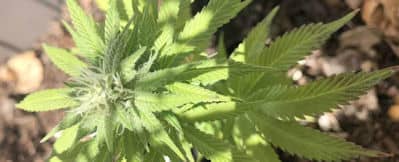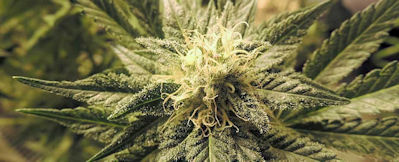Top Cannabis Growing Tips And Tricks To Improve Your Harvest

Whether you’re just starting out or are an experienced grower, the numerous variables in your environment can make a big difference to your final buds. Legalizing cannabis in many states across the U.S. has created a new and exciting trend among growers. Many marijuana enthusiasts share cannabis growing tips and tricks with their friends. However, some information can lead you in the wrong direction. Often tips can be misleading or false. With this in mind, we set out to share some valuable and timeless cannabis growing tips you can count on to improve your harvest.
Tip #1: Choose your growing medium wisely
Choosing a good medium to grow your cannabis plants can make a huge difference to your final yield, and that’s something known by most growers. Yes, hydroponic systems can allow your plant to grow amazing roots and see impressive results with enormous buds. However, this medium has very little room for mistakes. Root diseases, wrong water pH, incorrect nutrients, or even a water pump failure can kill your plant in just a couple of days.
We’re not saying this to throw you off, but rather to help you make a wise decision and only choose hydroponics if you have some experience growing cannabis indoors. Finding the best nutrients for growing hydroponic cannabis can also make a huge difference.
For beginner growers who have some room in their budget, the go-to option should be a super soil potting mixture with one-third of perlite added to the mix. If you’re on a tight budget and find the super soil mix to be too expensive, you can purchase an organic soil potting mix and add some fertilizers to it.
Adding perlite will help make your soil more aerated. It will also give the roots more room to grow and breathe. The yield may not be as impressive as what you could expect from hydroponics, but if you make any mistakes, you can still save your harvest without much loss. Learn more about finding the best soil for cannabis.
Tip #2: Choose your genetics wisely
You can save money in many aspects of your grow room or even grow your cannabis plants inside a closet if you’re really on a budget. However, you should definitely avoid trying to save money on the genetics of your plants; otherwise, you can end up feeling frustrated and losing tons of time. In our guide for growing cannabis indoors, we provide some tips on the easiest strains for beginners. Besides choosing a strain that fits your needs, you should turn to a reliable source, whether they’re seeds or clones.
To ensure guaranteed sex and genetics of your cannabis plants, we can’t stress this enough: buy cannabis clones! Clones can be more expensive than seeds, but they will save you time, and you know the exact strain you’re getting. Plus, you don’t need to buy new clones every time you start growing a new plant. You can simply take clones from the plants during the vegetative stage, and you’ll always have the same genetics, strain, potency, and flavor.

You can save money on almost everything, except when choosing your genetics.
Tip #3: Less is More When Watering and Feeding
It’s hard to control the urge to water or feed your plants all the time. But cannabis is an incredibly resilient plant, and will easily adapt to environmental conditions. For this reason, you should always play it safe. Rather than overwatering or overfeeding your plants, it’s actually better that you give them fewer nutrients and less water. That’s not to say that you should make your plants struggle on through drought and without nutrients! However, you should know that fixing an underfed plant is way easier than fixing an overfed one.
Giving the plant more water and nutrients than it needs can harm it beyond saving. So, every time you feel like watering your plant, touch the soil and see if it’s dry. If it’s wet to the touch, there’s no need to water it just yet. A moisture meter can help you assess the humidity on the top of the soil as well as further down. This will make it easier to avoid too much water in the roots. When it comes to feeding, the best way to keep it safe is by diluting the quantity suggested by the manufacturer by half or a third of the amount.
Tip #4: Pay Close Attention to Signs of Nutrient Deficiency
Lack of nutrients is one of the main reasons why cannabis plants will have smaller yields. But when growing in soil, the earlier you notice these signs, the easier it is to correct the deficiencies and ensure that these won’t impact your harvest. Pay attention to the lower leaves because that’s where most of these signs will appear.
Leaves that turn yellow or brown and fall during the vegetative stage can indicate a lack of nitrogen. However, it’s normal for them to be like this during the late flowering stage. If the yellow or brown leaves are at the top of the plant, this is not likely to be a nitrogen issue, but rather a lighting one: your plant is too close to the light, and it’s getting burnt. If you checked and the lights and are not close to the plant, it could be a potassium deficiency, especially if the leaves’ tips have started to curl and turn brown. A magnifying glass will come in handy when trying to detect these details.
Dark-green or yellow curling leaves with brown spots can mean phosphorus deficiency. However, most of the nutrients available for purchase are high in phosphorus – so the deficit is likely caused by an imbalanced pH. If you’re feeding your plant with the right nutrients for each stage – grow for the vegetative stage and bloom for flowering – the issue could be with the pH. Having a pH meter at hand will help guide you so you can keep it between 6.3 and 7.
Tip #5: Make Notes and Take Photos of Your Plants
This tip is essential for both novice and experienced growers because you can learn from your own experiences. So, when organizing the supplies you’re going to purchase for your growing, add a notebook to the list. Don’t just rely on your memory. Take pictures of each detail and stage of your plant for future reference. Make thorough notes about the dates, watering times, schedules, nutrients, additives, and every step that you take.
As you gain experience and learn from your mistakes you’ll start to understand how the changes in the environment and schedules affect the plant’s growth and yield. And it won’t be long before you thank yourself for making notes and taking pictures. If you find a pest, a nutrient deficiency, or make any errors along the way, you’ll be much less likely to make the same mistake twice when you can refer to your records to see what works and what doesn’t. With each new harvest, you’ll have picked up more tips and tricks to learn from to lead your clones towards success.
If you’re looking for cannabis clones in California, Homegrown Nursery has got you covered. If you want to know more cannabis growing tips and tricks, read our Cannabis News articles.
